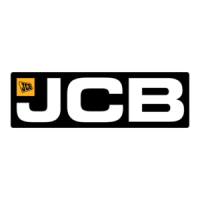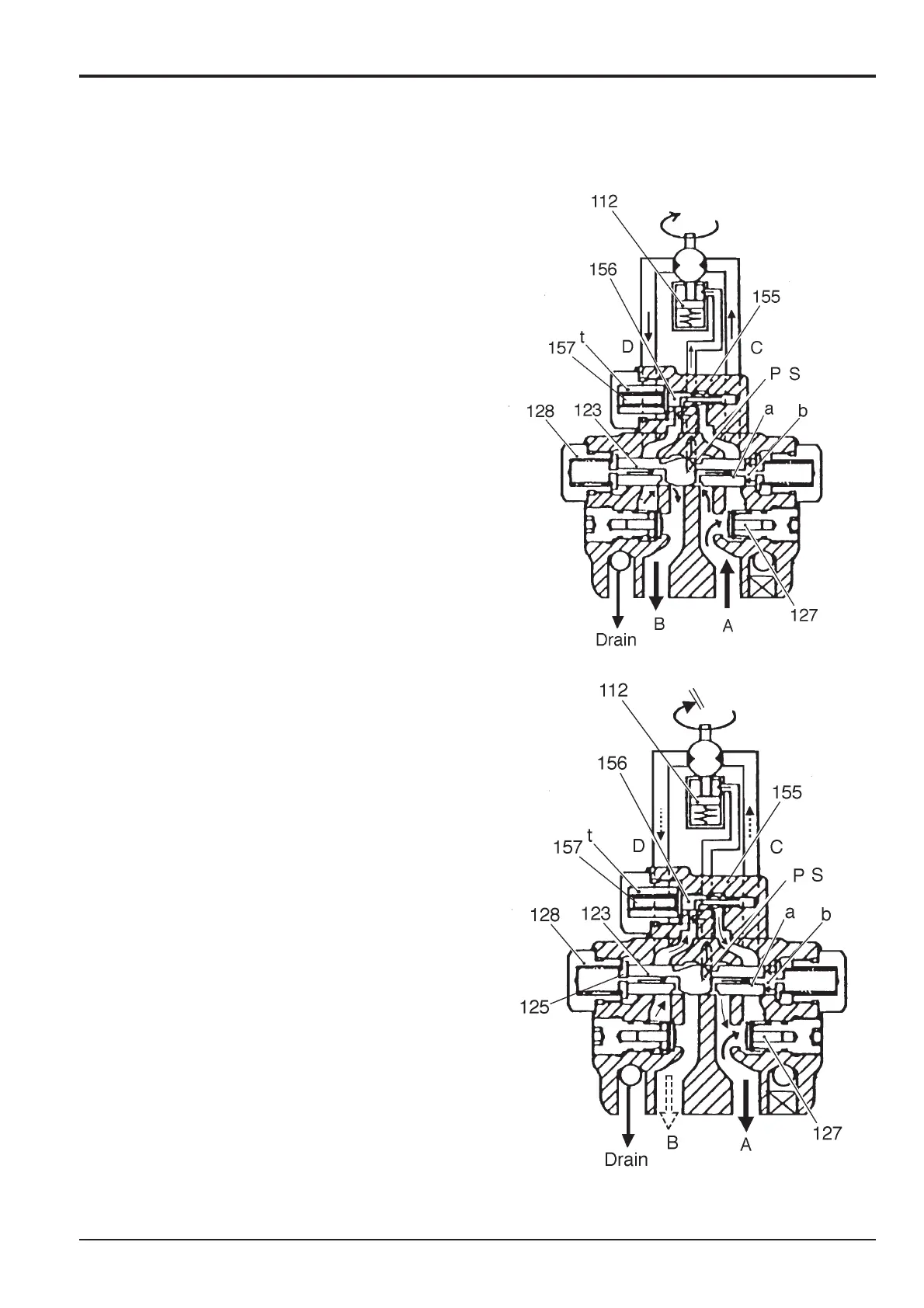3 - 2
Brake Valve
During Travel - Brake Released
During travel, pressurised oil is fed into port A to open valve
127 and supply oil via port C to traction motor. The
pressurised oil also enters chamber b through drilling a of
spool 123. The pressure build-up in chamber b causes spool
123 to move to the left to connect motor return port D to
port B.
The result is unrestricted oil flow and, therefore, rotation of
the motor. The movement of spool 123 also allows
pressurised oil to flow through port P into piston 112 of the
parking brake, overcoming the parking brake spring to
release the brake pressure.
The pressurised oil enters port S to chamber t and moves
the stopper 157 on the inner surface of the body 155. This
prevents the spool 156 from moving and closes the
hydraulic motor port C. When the pressurised oil is delivered
from port B, the spool 123 and the valve 127 move and the
hydraulic motor initiates reverse rotation.
Travel Stopped - Brake Activated
When travel is de-selected, there is no pressure at port A.
Spool 123 is no longer under the influence of pressurised oil
(as described above) and returns to its neutral position under
the influence of the two springs 128 and 125.
The oil from chamber b flows through passage a and out of
port A so that the back pressure is produced on passage a
and the return speed of the spool is controlled. The inertia
of motor immediately following the de-selection of travel
produces a build up of pressurised oil at port D. The
pressurised oil flows from port D through the skim passage
between the spool and the rear flange and returns through
port B. When the spool returns to neutral status, the
hydraulic motor return passage is fully cut off by the spool
and the motor is gradually stopped.
Section F Transmission
9803/6020
Section F
3 - 2
Issue 1
Operation
291130
291140

